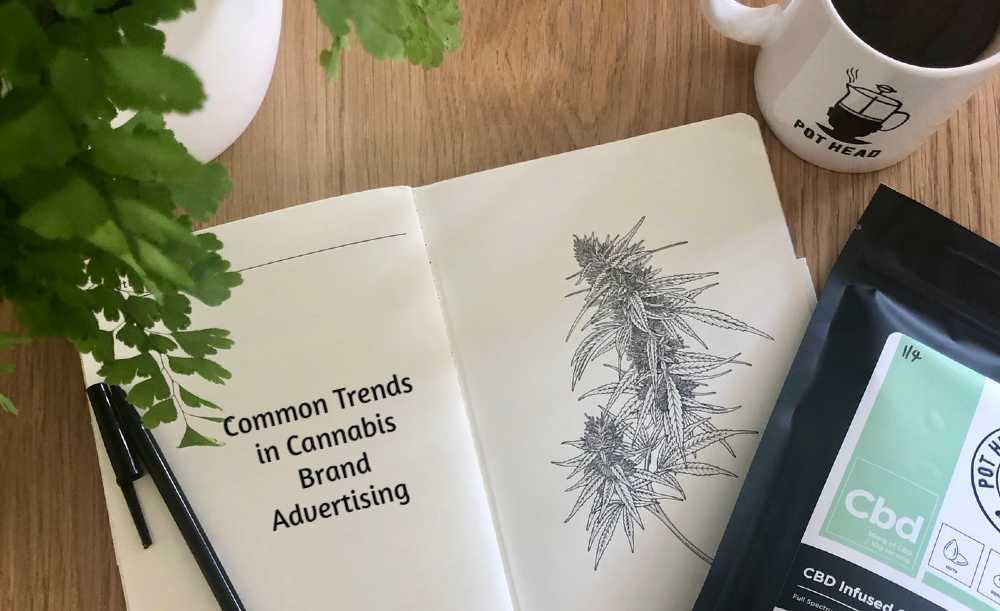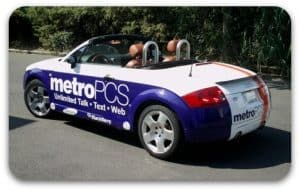Cannabis brands have a visibility problem. Despite growing legalization across U.S. states and the explosion of CBD and THC-based wellness products, many cannabis companies still face public hesitation and legal roadblocks — especially when it comes to advertising.
Digital ad platforms limit placements. Billboards are banned in many zip codes. And mainstream media? Still cautious.
So where does that leave the cannabis brand advertising strategy? Surprisingly, the answer might lie in a simple shift from digital noise to physical presence — specifically, in-hand advertising.
Let’s explore how tactile, place-based media like branded pharmacy bags, coffee sleeves, and pizza boxes are giving cannabis advertising a powerful edge — building trust, legitimacy, and measurable results in one of the most regulated and misunderstood industries.
Why Traditional Cannabis Advertising Falls Short
Ask any marketer in the space and they’ll confirm: cannabis ads face a minefield of restrictions. Between federal ambiguity, state-by-state compliance laws, and platform policies, many cannabis brands struggle to run even basic promotions.
Google and Meta ads? Off-limits in many regions.
Billboards? Legal in some states, banned in others.
Influencers and events? Effective, but expensive and hard to scale.
This fragmented reality forces brands to get creative — but not reckless. And that’s why the smartest teams are shifting focus to high-touch, local, in-hand strategies that feel authentic and stay compliant.
The Cannabis Brand Advertising Approach That Gets Noticed — And Trusted
In-hand advertising flips the script. Instead of shouting from a billboard, it whispers directly into the consumer’s life, at the moment it matters most.
Picture this:
A branded pharmacy bag promoting a new CBD sleep aid.
A coffee sleeve in a local café that advertises a nearby dispensary.
A pizza box offering an infused beverage coupon after a weekend delivery.
A bar coaster linking to a cannabis brand’s educational blog through a QR code.
These aren’t just cannabis ads. They’re trusted objects — useful, tactile, and embedded in everyday routines. When a brand shows up in the consumer’s hand, it becomes part of their trusted environment.
How In-Hand Cannabis Ads Build Legitimacy
Let’s break down why in-hand advertising aligns perfectly with the cannabis brand advertising challenge:
Association with Familiar, Trusted Spaces
When cannabis brands appear on everyday objects like pharmacy bags or pizza boxes, they’re endorsed by proximity. The consumer thinks: If this brand is promoted here, it must be legitimate.
This is known as the halo effect — where trust in one brand or space spills over into another. For cannabis advertisements fighting stigma, this is a priceless psychological boost.
Non-Disruptive and Welcome
Unlike pop-ups or online banners, in-hand cannabis ads are useful. The ad doesn’t scream. It simply lives on a product the consumer already needs. This creates a non-defensive, open engagement moment — the kind marketers dream of.
Localized and Compliant
In-hand ads are delivered hyper-locally, targeting neighborhoods or zip codes where cannabis products are legally sold. No crossing jurisdictional lines. No OOH law violations. No ad account shutdowns. Just strategic, compliant exposure.
QR-Driven Tracking and Education
Many in-hand cannabis ads now feature QR codes linking to gated landing pages, product explainers, or store locators. This makes every bag, sleeve, or coaster a conversion funnel — and adds an educational element that helps destigmatize the brand.
The Right Moments for Cannabis Advertisement Exposure
The effectiveness of in-hand media lies not just in what it is — but when and where it shows up.
Here are key moments when cannabis ads are most welcome:
Evening coffee or tea: a relaxing moment to introduce a sleep-enhancing CBD brand.
Weekend food delivery: a perfect time to promote cannabis-infused snacks or drinks.
Salon or barbershop visits: low-stress settings for promoting self-care or wellness-oriented cannabis products.
Waiting rooms or pharmacies: trusted environments to introduce medical cannabis solutions.
These settings create emotional alignment — where the brand message matches the consumer’s mindset and environment.
A Case Example: In-Hand Cannabis Advertising in Action
Let’s imagine a real-world scenario.
Brand: A premium CBD company targeting stress relief.
Target audience: Urban professionals aged 30–45.
Geo: Brooklyn, NY (where cannabis use is legal and growing fast).
Strategy:
Coffee sleeves in coworking space cafés, with the message: “Stress less today. Discover your calm.”
QR code leads to a 2-minute quiz and free sample request.
Pharmacy bags in independent wellness clinics carry the same message.
Bar coasters at partner lounges feature a discount code for first-time buyers.
Results:
16% QR code scan rate from coffee sleeves
6% sample conversion rate from pharmacy bag placements
Over 70% of participants said the brand “felt trustworthy and professional”
This campaign didn’t shout. It showed up quietly, respectfully, and repeatedly — the formula for earning trust in cannabis advertising.
Why the Cannabis Brand Advertising Strategy Needs In-Hand Media Now
In a market where trust is fragile, legality is patchy, and digital reach is restricted, in-hand advertising offers cannabis brands a tangible, compliant, and highly engaging solution.
It’s:
Contextual: Appears during moments of low distraction and high openness.
Tactile: Creates a physical connection that digital ads can’t replicate.
Targeted: Delivered to the exact zip codes and venues you want to reach.
Memorable: Held, seen, and used — often for 15+ minutes at a time.
Put simply, cannabis ads are more believable when they’re in someone’s hand, not on someone’s feed.
Final Thoughts: The Future of Cannabis Advertising Is Tactile
If you’re a marketer or brand leader looking to elevate your cannabis brand, it’s time to rethink what the cannabis brand advertising strategy really means. It’s not about shouting louder. It’s about showing up smarter — in the exact moment your audience is most receptive.
That’s why in-hand media is fast becoming the go-to channel for emerging cannabis brands. It’s subtle. It’s strategic. And most importantly, it’s trusted.
So the next time you plan a campaign, don’t just ask how to get attention. Ask how to earn trust — one coffee sleeve, one pharmacy bag, or one coaster at a time.






